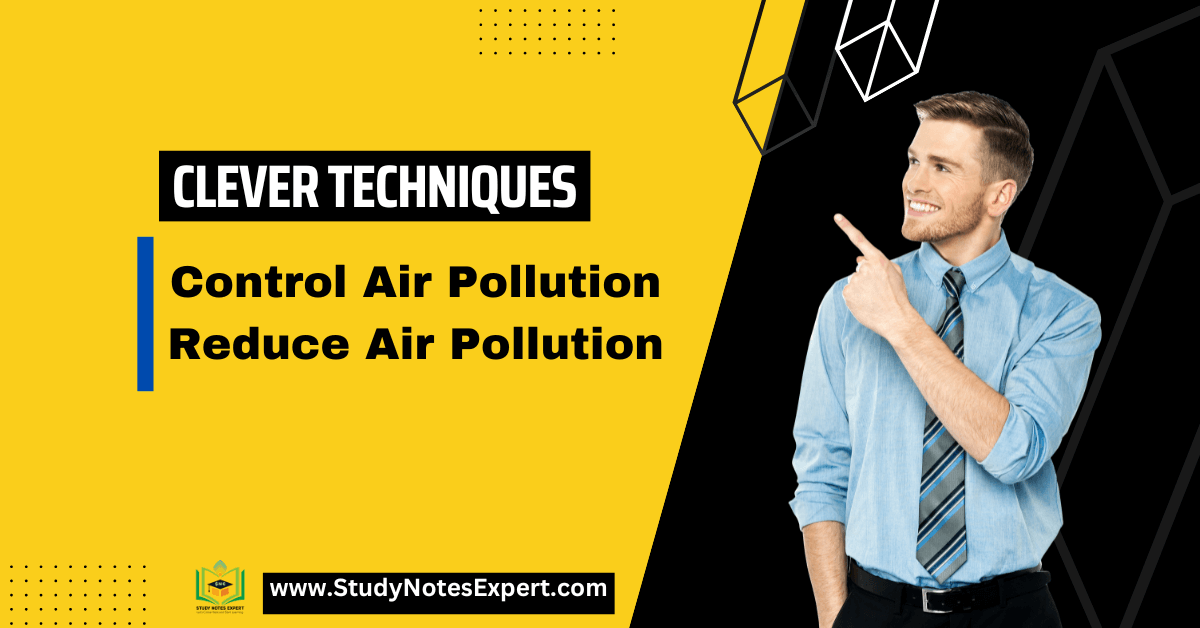Air pollution defines the presence of harmful substances in the air that we breathe. These pollutants can have negative impacts on human health, as well as the environment and climate. In this blog, we will discuss the methods to control and reduce air pollution.
Most Effective Method to Control Air Pollution
The are various steps that we can adopt to control air pollution:
- The forest cover should be protected by restricting deforestation and adopting afforestation programs. Best way to control of air pollution is trees. There is a 33 percent of the land area remains under forest cover. It will help in controlling air pollution and also help in maintaining the ecological balance.
- Need to a ‘green belt’ around every township and village. Similarly, industrial areas should be surrounded by green belts.
- The main source of air pollution is automobiles. Therefore, their engines are redesigned so that their emissions cause minimum pollution. There are some steps have been taken, and some technology has also been developed, but it is still preliminary.
- In developing countries, the traditional use of fuelwood need to control
- In industries, arrangements for pollution control need to develop. Only after the full arrangement of effluent treatment is made is permission for production should be given.
- Minimize activities that cause pollution, like transportation and energy production.
- Modification of process and equipment
- Use of appropriate material
- Using low sulphur coal in industries
- We can remove sulphur from coal. It can be done by washing or with the help of bacteria.
- Vehicular pollution can be checked by regular tune-up of engines;
(A) Replacement of more polluting old vehicles
(B) Installation of catalytic converters
(C) Engine modification to have fuel efficient (lean) mixtures to reduce CO and hydrocarbon emissions
(D) Slow and cooler burning of fuels to reduce NO, emission (Honda Technology) - Using mass transport systems, bicycles, etc.
- Shifting to less polluting (clean) fuels (hydrogen gas)
- Using non-conventional sources of energy
- Using biological filters and bio-scrubbers
- Planting more trees
- Reduction of pollution at source
Popular 11 Techniques to Reduction of Air Pollution
Air pollution can be reduced at the source place in the following way:
1. Gaseous Pollutants
Gaseous pollutants can be reduced by physical adsorption on porous solid materials like activated charcoal, silica gel, Fuller’s earth, etc. Effluent gases can be absorbed in a liquid absorbent, e.g., SO₂ absorbed in an ammonia solution. They can be removed by condensation, which is carried out by a cooling medium in tubes where the gases in contact condense and can be collected afterward. Combustion can reduce pollution by burning the pollutants in combustion equipment at optimal oxygen and temperature conditions.
2. Particulate Matter
Many devices are available nowadays, depending on particulate characteristics, flow rate, collection efficiency, costs, etc.
3. Setting Chambers
These are nothing more than large places in the flues, similar to settling tanks in water treatment. These chambers remove only the large particulates.
4. Cyclones
Cyclones are widely used as pre-cleaners to remove heavy material before further treatment. These are widely used for removing large particulates. The dirty air is blasted into a conical cylinder but off the centreline. This creates a violent swirl within the cone, and the heavy solids migrate to the cylinder wall, slowing down due to friction and exiting at the bottom of the cone. The clean air is in the middle of the cylinder and exists out the top.
5. Bag Filters
They operate like the common vacuum cleaner. Fabric bags collect dust, which must be periodically shaken out of the bags. The fabric removes nearly all particulates. Bag filters are widely used in many industries but are sensitive to high temperatures and humidity.
6. Vet Collectors
They come in many shapes and styles. The simple spray we are an effective method for removing large particulates. More efficient scrubbers promote the contact between air and water by violent action in a narrow throat section into which the water is introduced. Generally, the more violent the encounter, the smaller the gas bubbles or water droplets and the more effective the scrubbing.
7. Electrostatic Precipitators
These are widely used in power plants. One type consists of a pipe with a wire hanging down the middle. The particulates will collect on the pipe and must be removed by banging the pipes with hammers.
8. Gas Scrubbers
These are wet collectors, as described above, but are used to dissolve the gases.
9. Adsorption
It uses a material such as activated carbon to capture pollutants. Most of these work well for organics and have limited use for inorganic pollutants. Such adsorbers may be expensive to regenerate.
10. Incineration
It is a method for removing gaseous pollutants by burning them to CO₂, H₂O, and inserts. This works only for combustible vapors.
11. Catalytic Combustion
It involves using a catalyst to adsorb or chemically change the pollutants. It is again important to emphasize the dependence of the effectiveness of a treatment device on particle size.

